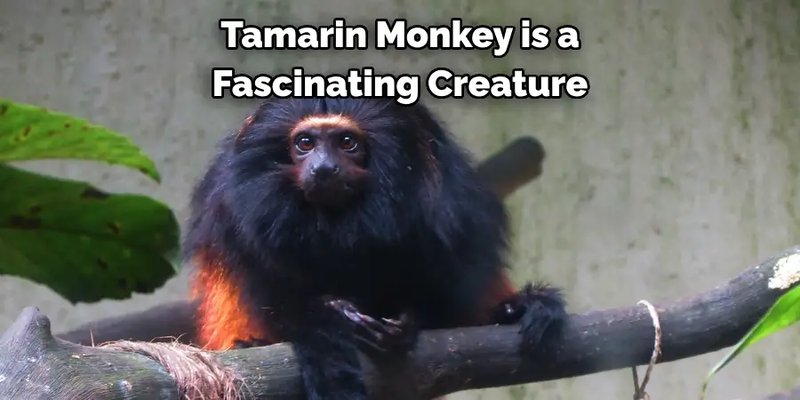
From ancient legends of the Amazon rainforest to tales told around campfires, tamarins have inspired various narratives that reveal human fascination with nature. Much like how different cultures view their local wildlife, the way tamarins are portrayed often reflects a deeper understanding of our relationship with these animals. In this article, we’ll dive into how tamarins are represented in culture and folklore, exploring their symbolic meanings and the tales they inspire.
The Role of Tamarins in Indigenous Folklore
Indigenous cultures in regions like the Amazon rainforest have rich stories about tamarins. These tales often highlight the tamarin’s cleverness and agility, attributing human-like qualities to them. For instance, in some cultures, tamarins are viewed as tricksters. They’re seen playfully stealing food from larger animals or outsmarting predators, which mirrors the human experience of overcoming challenges through cleverness.
One well-loved story tells of a tamarin that outwits a jaguar. By using its quick reflexes and agility, it leads the jaguar on a wild chase, teaching a lesson about using one’s wits to escape danger. These stories are significant; they serve not only as entertainment but also as educational tools, conveying vital lessons about survival, intelligence, and humility.
Tamarins as Symbols of Playfulness and Joy
Tamarins are also often celebrated for their playful nature. In many cultures, they symbolize joy and happiness. Their lively antics and sociable behavior help remind us of the importance of play and community. For example, in Brazilian culture, tamarins are sometimes associated with festivities and celebrations. Their playful spirit is seen as a reflection of community bonding and the joy of life.
In the spirit of these cultural perspectives, you might find tamarins featured in local art, crafts, and festivals. They often embody positive traits, reminding people to embrace laughter and connection with others. Additionally, their playful nature often finds its way into children’s stories, where they delight young readers with their cheeky behavior and vibrant personalities.
Tamarins in Modern Literature and Media
Fast forward to modern times, and tamarins have found a place in literature and media. Children’s books frequently feature these adorable monkeys as central characters. For instance, their playful antics can teach lessons about teamwork, friendship, and the importance of nature. These stories help introduce young readers to the idea of wildlife preservation and the beauty of biodiversity.
Movies and documentaries also showcase tamarins, portraying their natural habitats and social structures. Such representations increase awareness about the environmental threats these animals face, helping audiences understand the impact of deforestation and climate change on their survival. They serve as a bridge connecting the audience to the reality of wildlife conservation, urging viewers to take action.
Cultural Reverence and Conservation Efforts
Given their symbolic significance, many cultures hold tamarins in high regard, leading to various conservation efforts. In Brazil and other South American countries, initiatives focus on protecting tamarin habitats, ensuring these creatures continue to thrive in the wild. Local communities often engage in conservation programs that emphasize the ecological role of tamarins, helping people appreciate these animals beyond their playful reputation.
You might come across community festivals that celebrate tamarins, bringing awareness to their conservation. These events often feature activities that educate participants about the tamarin’s environment, diet, and social behavior, reinforcing the idea that protecting these creatures is crucial for maintaining ecological balance.
Art and Representation of Tamarins
Tamarins have also made their mark in the art world, inspiring numerous artists over the years. From vibrant paintings to intricate sculptures, their dynamic forms provide a source of creativity and expression. Artists often depict them in lively, colorful ways, capturing their essence and vivacity. This artistic representation often ties back to cultural stories, showcasing the bonds between humans and these enchanting creatures.
Many indigenous artists incorporate tamarins into their work as a means of preserving and sharing their cultural heritage. By doing so, they pass down stories of tamarin legends to future generations, ensuring that these narratives remain alive. This artistic legacy not only honors the significance of tamarins but also reinforces connections within communities.
The Connection Between Tamarins and Human Experience
Ultimately, the portrayal of tamarins in culture and folklore reflects a deeper connection between humans and the natural world. Tamarins, with their playful nature and social behaviors, teach us valuable lessons about community, resilience, and the joy of living. As we tell stories about these delightful creatures, we create a shared understanding of our place in the environment and the importance of preserving it.
You might be wondering why this matters. Well, storytelling promotes empathy and understanding, encouraging us to care for the world around us. By celebrating tamarins in various cultural forms, we honor their existence and contribute to a broader conversation about conservation and respect for wildlife.
Tamarins are more than just charming little monkeys; they are symbols of joy, cleverness, and community across cultures. Through folklore, art, literature, and conservation efforts, these wonderful creatures remind us of our connection to nature and the importance of preserving it. As we appreciate the roles they play in our stories and societies, we also reflect on the legacies we wish to leave for future generations, underscoring the idea that every creature, no matter how small, has a story worth telling.
